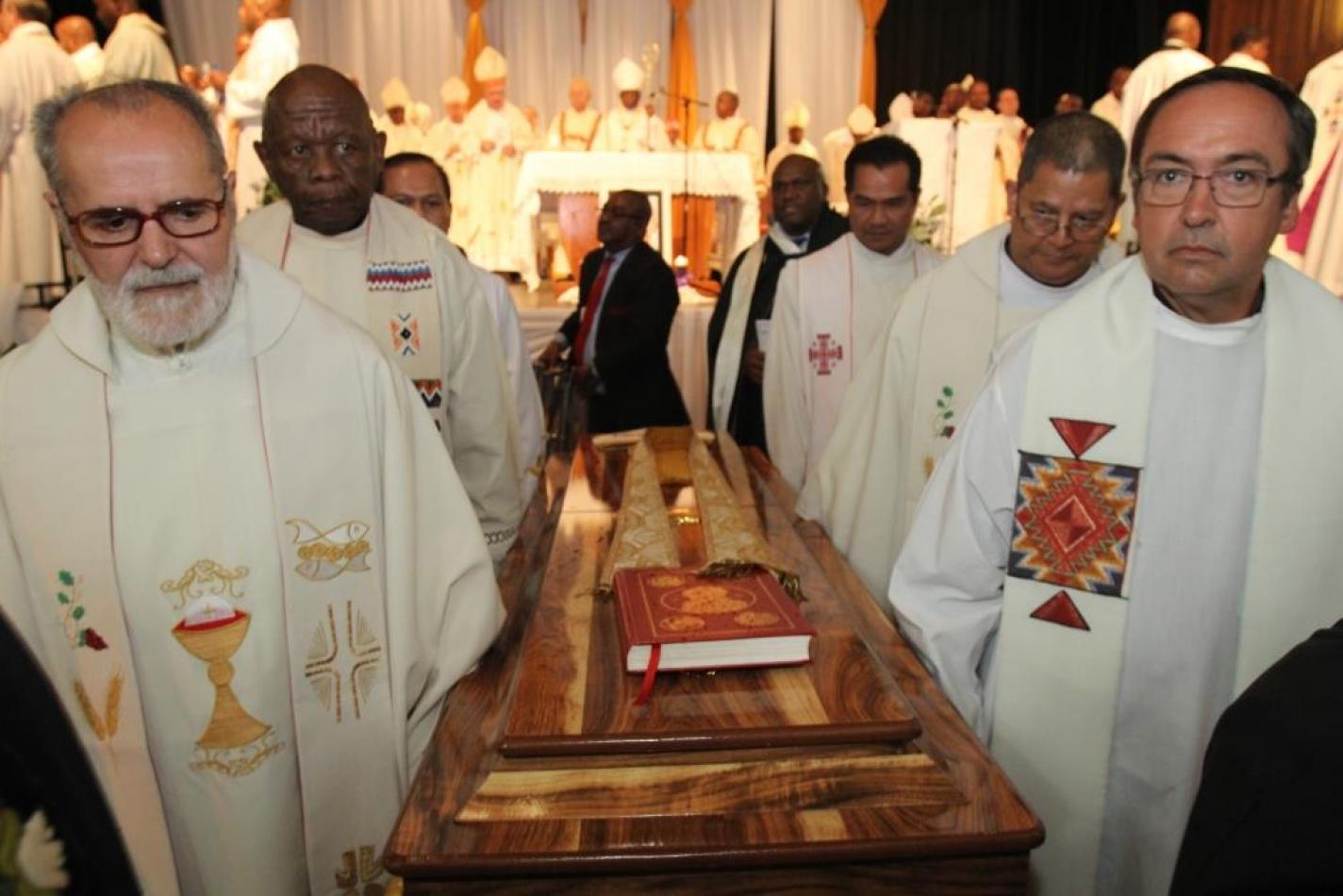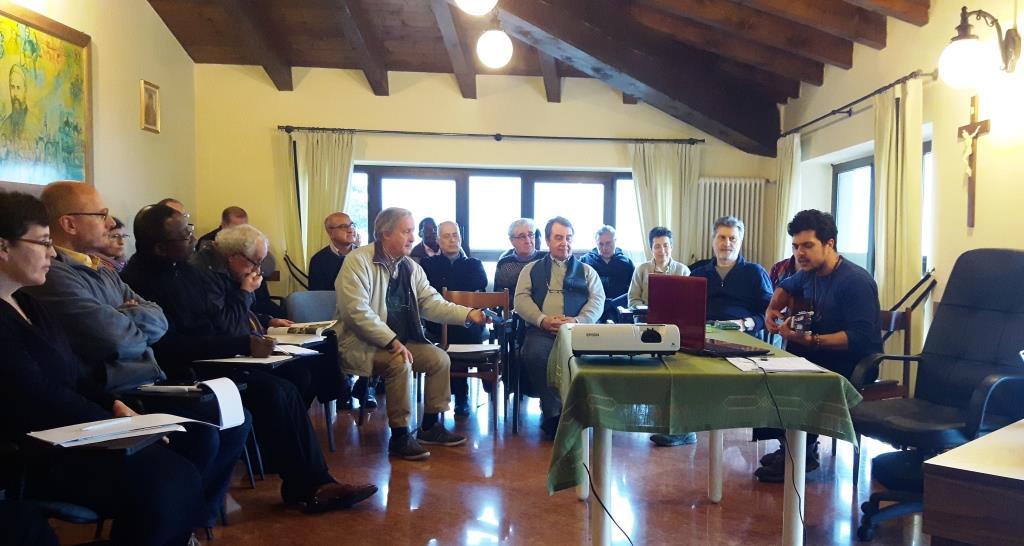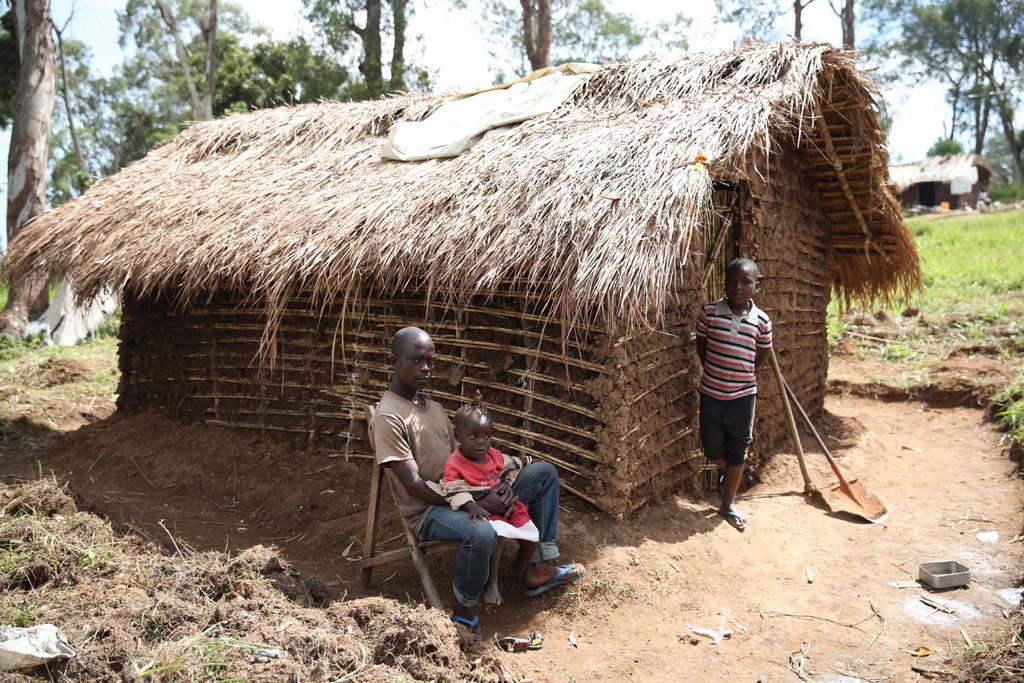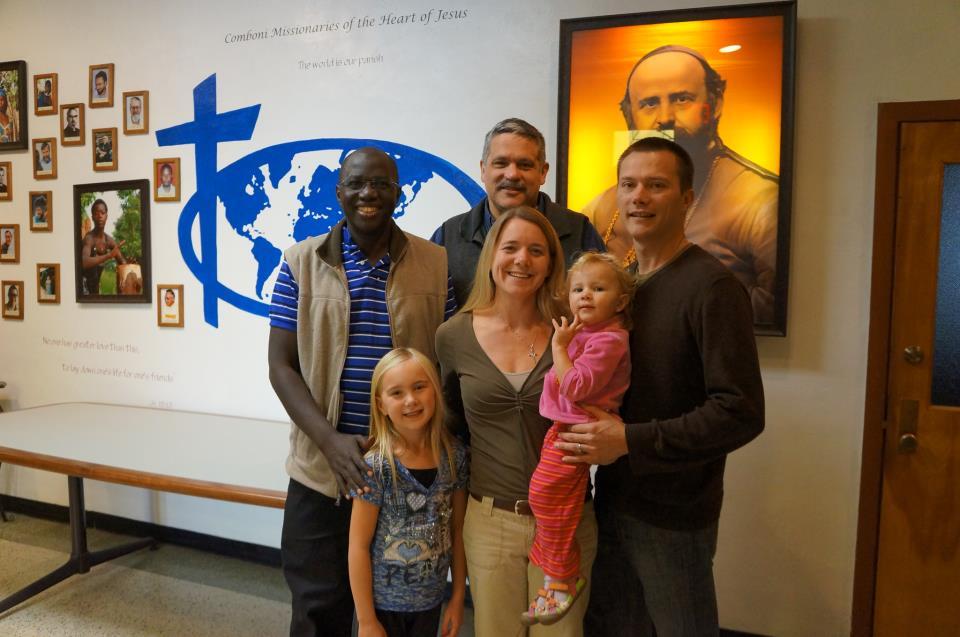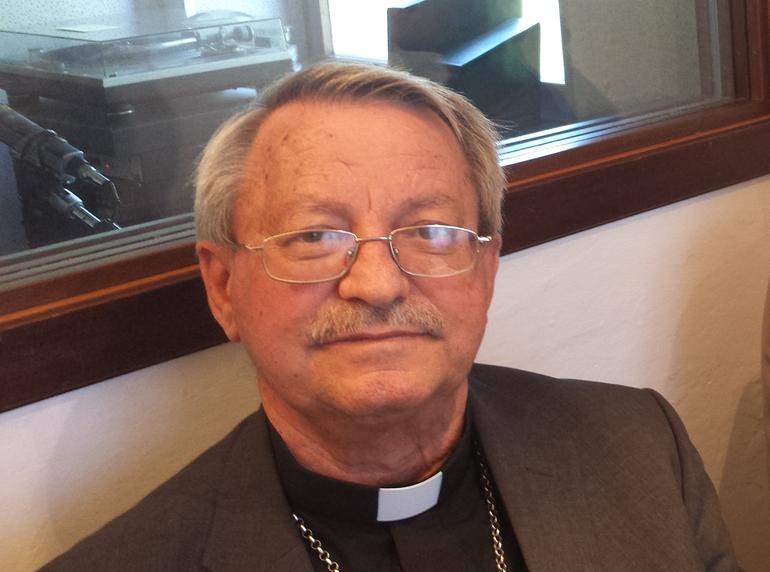Daniel Comboni
Missionários Combonianos
Área institucional
Outros links
Newsletter
Tuesday, June 18, 2019
His Excellency Monsignor José Luís Gerardo Ponce de León, IMC – Bishop of Manzini, Swaziland – presented the late Giuseppe (Joe) Sandri as a good shepherd and pastor, a teacher and leader, a Comboni missionary charged with St Daniel Comboni’s vision of evangelising Africa with Africans. Indeed he was a Wiseman pointing his finger to the sky for us and who also gave us a map that would lead us to a treasure. His Lent came early, and his Passion was long. He died on the feast of Ascension, a Solemnity that reminds us that death is not annihilation but transformation of life.
When an artist paints a piece of art, they use their ingenuity to bring into existence what they have already conceived in their minds. They look at a big log of wood or boulder and see in it the statue of a great figure like Prometheus or the Statue of Liberty; they look at a piece of canvas and see in it a great fresco or painting like the one of The Last Judgement by Michelangelo or Rembrandt The Return of the Prodigal Son’.
In any funeral, it is not uncommon to see how the selected speakers struggle or easily bring out the portrait of the deceased. Like any artist working on a piece of art, each speaker plays around with words, adjectives, idioms, and other expressions that add value to the portrait. Hardly does one hear about the struggles and the shadows of the deceased. It appears that the Roman saying De mortuis nihil nisi bonum and De mortuis nil nisi bene [dicendum] ("Of the dead, [say] nothing but good") has been wholly embraced by all cultures. Recalling the testimonies of the different people who attended the funeral of the late Bishop Giuseppe Sandri (Joe), I believe the roman dictum concerning the dead could not be appealed to.
In his introductory remarks, His Excellency Monsignor José Luís Gerardo Ponce de León, IMC – Bishop of Manzini, Swaziland – the homilist for the requiem mass for the late Bishop Sandri, posed a question: “Who was Joe?” With this question, he went deeper and deeper to bring to the fore all that any artist would do to bring out the portrait of Bishop Sandri.
The late had already given us the portrait of himself and spared us the strain in bringing it out ourselves. Just as the fine strokes of a painter’s brush or the chipping of a sculptors chisel brings out the final product, every word of the homilist brought to life memories of the late Bishop Joe. His determination and quest to restore dignity to the people of God especially the refugees and immigrants, as accounted by his statement to Italian authorities, “You complain about refugees unless you need them to work for you or use them as prostitutes!”; the life of Dr Taban that speaks volumes of his commitment to restore dignity to all people; his availability to the college of bishops, priests, religious, and laity in the SACBC; his immediate respond to emails from the SACBC Secretary General and his attention to some fine details that might have been overlooked in the meetings; his proverbial joy and good sense of humour; his engagement with the local politicians and fight against corruption as attested by eMalahleni Mayor Councillor Lina Malatji; and his mastery of the local languages that enabled him to speak to the heart of the local people.
Bishop José Luís presented the late Joe Sandri as a good shepherd and pastor, a teacher and leader, a Comboni missionary charged with St Daniel Comboni’s vision of evangelising Africa with Africans. Indeed he was a Wiseman pointing his finger to the sky for us and who also gave us a map that would lead us to a treasure. His Lent came early, and his Passion was long. He died on the feast of Ascension, a Solemnity that reminds us that death is not annihilation but transformation of life. Now that he is gone, we are free either to look where he was pointing for us or like fools look at his finger; we can also choose to make copies of the map, frame it and thus never find the treasure or gather courage and embark on the arduous journey of finding the treasure. The choice is ours.
Fr Robert Kinena Ndungu MCCJ
St Augustine’s Catholic Church.
Silverton, Pretoria. RSA.

